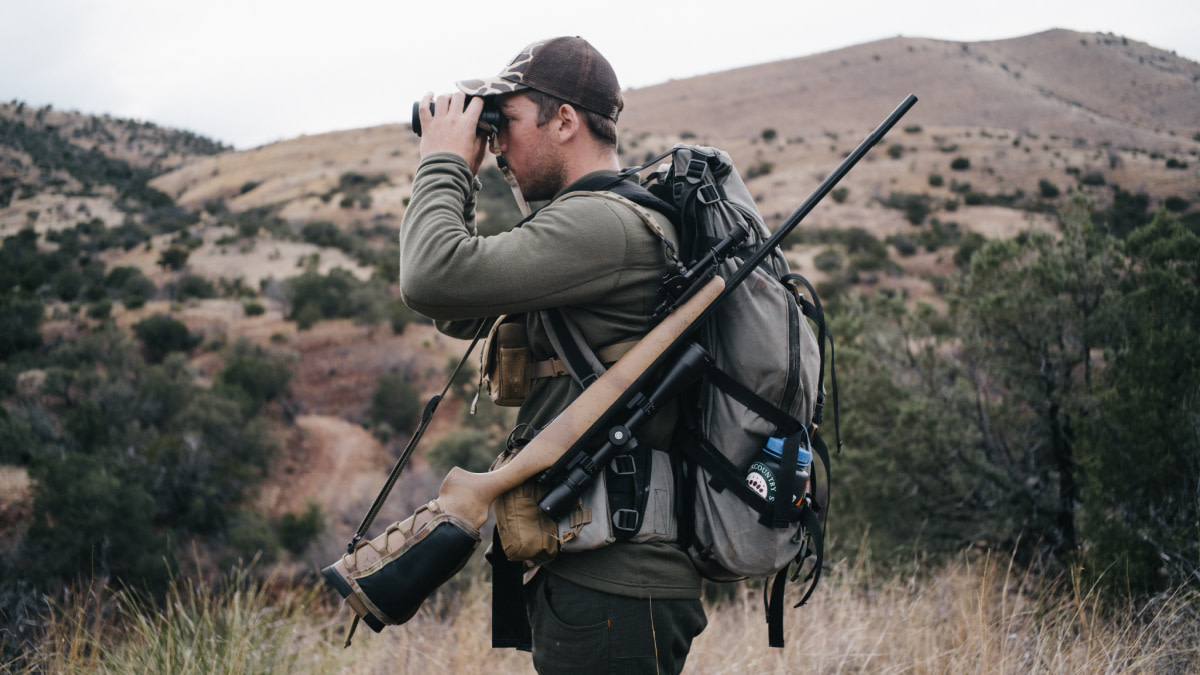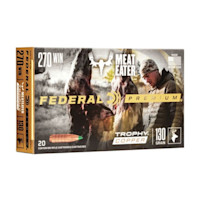
Ask any American hunter to name his top three big game cartridges and chances are good that at least one of those will be the .308 Winchester or .270 Winchester.
Winchester launched the .270 Win. all the way back in 1925 for the Model 54 bolt-action rifle. At the time it offered better long-range performance than any other cartridge on the American market, and today it remains one of the most frequently chambered calibers in existence.
The .308 Win. was introduced in 1952 for Winchester’s Model 70 bolt action and Model 88 lever action. It may be even more common today than the .270 Win., due in large part to its adoption by the U.S. military in 1954. Its military designation, the 7.62x51mm NATO, is still used in conflicts around the world and virtually every major manufacturer offers rifles in this caliber.
Internet debates rage about the advantages and disadvantages of each caliber, but most use the time-tested argument, “My old man loved the .270 Win. and so should you!” We’ll try to be a little more scientific. When it comes to ballistics, shootability, and versatility, which caliber takes this heavyweight bout?
.308 Win. Ballistics vs. .270 Win. Ballistics
Both calibers pack a punch. The .308 Win. is most frequently loaded with projectiles between 150 grains and 180 grains and boasts muzzle velocities between 2,800 feet per second and 2,500 fps, depending on bullet weight and barrel length.
The .270 Win. moves a little faster due to its lighter projectiles and larger case capacity (it’s basically just a necked-down .30-06). Most commonly loaded with bullets between 130 and 150 grains, the .270 Win. pushes projectiles between 2,800 fps and 3,100 fps.
That additional speed translates to a greater effective range. Effective range depends largely on bullet construction and shot placement, but in general, the faster a projectile is travelling, the greater distance it can maintain terminal velocity.
Federal’s Trophy Copper line, for example, is designed to provide at least one “caliber expansion” at 1,800 fps. In other words, if the projectile is travelling at least 1,800 fps, the front-end cavity will open up and peel back to at least caliber diameter. Federal’s 150-grain Trophy Copper .308 Win. is travelling at 1,800 fps at 580 yards, but the 130-grain .270 Win. is still cooking along at 1,800 fps all the way out to 680 yards.
That additional 100 yards of effective range is why many long-range western hunters have opted for the .270 Win., and why many have stuck with the venerable old cartridge even as sexy new long-range cartridges have come onto the market.
Defenders of the .308 Win. might argue that the caliber is loaded with heavier projectiles, which allows for taking larger game. That may or may not be true, but the century-long track record of bringing down game like moose and bears proves that the 130- to 150-grain projectiles of a .270 Win. are more than sufficient to hunt America’s largest animals.
Winner: .270 Win.
.308 Win. Shootability vs. .270 Win. Shootability
“Shootability” is availability plus comfort. For a caliber to be “shootable,” I have to be able to purchase cartridges at the store and not leave the range with a sore shoulder.
For high-end hunting loads, availability and cost will be comparable. Only $1 separates Federal’s Trophy Copper offerings in the two calibers, and most quality loads will run between $25 and $45 for a box of 20. All of Federal’s options are out of stock right now, but that’s the case with most ammunition these days. Normally, both calibers are readily available.
For plinking and practice rounds, however, the .308 Win. has the .270 Win. beat. The absolute cheapest .270 Win. runs about $1 per round. Thanks to its status as a NATO cartridge, the cheapest .308 Win. can be had for $0.60 to $0.75 per round for a box of 20, and bulk options are even cheaper.
I’d call comfort a draw. Depending on the weight of your rifle, neither caliber is particularly comfortable—or uncomfortable—to shoot. A light hunting rifle will likely produce a sore shoulder after a whole afternoon at the range, but a heavy target rifle or an AR-type rifle will soften the recoil impulse. Chuck Hawks’s rifle recoil table puts hard data to this subjective impression: Both calibers record similar recoil energies, though the .308 Win. is slightly stiffer.
Since practice is crucial to any successful hunt, and the .308 Win. offers a huge variety of plinking options, the .308 Win. takes the shootability round.
Winner: .308 Win.
.308 Win. Versatility vs. .270 Win. Versatility
“Versatility” refers to both the versatility of the caliber and how many types of firearms are commonly chambered in it.
Both calibers are incredibly versatile, which is one of the reasons for their lasting popularity. The .308 Win. has more range in terms of bullet weights (110 grains to 240 grains vs. 90 grains to 180 grains), but both calibers can take everything from varmints and predators to elk, moose, and bears.
But the .308 Win. has benefitted from bullet innovation in a way the .270 Win. has not. The firearms industry has poured tons of research and development into building new, better .30-caliber bullets. But since the advent of the 6.5 Creedmoor, the .270 Win. hasn’t received the same attention. There’s always a new super-heavy, high-BC projectile coming out for .308 Win. or the 6.5, but the same can’t be said of the .270 Win.
The .308 Win. is also chambered in a wider range of firearms, including bolt, lever, pump, and semi-auto actions. The semi-auto AR-10 is incredibly popular, and Henry makes a lever gun called the “Long Ranger.” While the .270 Win. is occasionally chambered in a semi-auto (Browning BAR) or pump gun (Remington M7600), the majority of chamberings use a bolt action.
While the .308 Win. boasts a larger range of actions, manufacturers chamber both cartridges in many high-end hunting rifles. Weatherby chambers a variety of rifles in .270 Win. and they offer a MeatEater edition of their Vanguard line in .308 Win.
The .308 Win. has a wider range of bullet weights and a wider range of actions. It takes the versatility round easily.
Winner: .308 Win.
And the Winner Is…
If you’ve been following the Caliber Battle series, you know that choosing a winner is never easy. This is the toughest choice yet. Both the .308 Win. and the .270 Win. offer deadly ballistics in shootable cartridges and rifles. The .270 Win. shoots flatter and hits harder, but for an all-around hunting caliber, I’m going with the .308 Win. That’s not because the .30-caliber cartridge is better, but because it’s more versatile. I like all the bullet and rifle options as well as the availability of practice ammunition. The .308 Win. is damn hard to beat, but the .270 Win. almost beat it.
Overall Winner: .308 Win.




